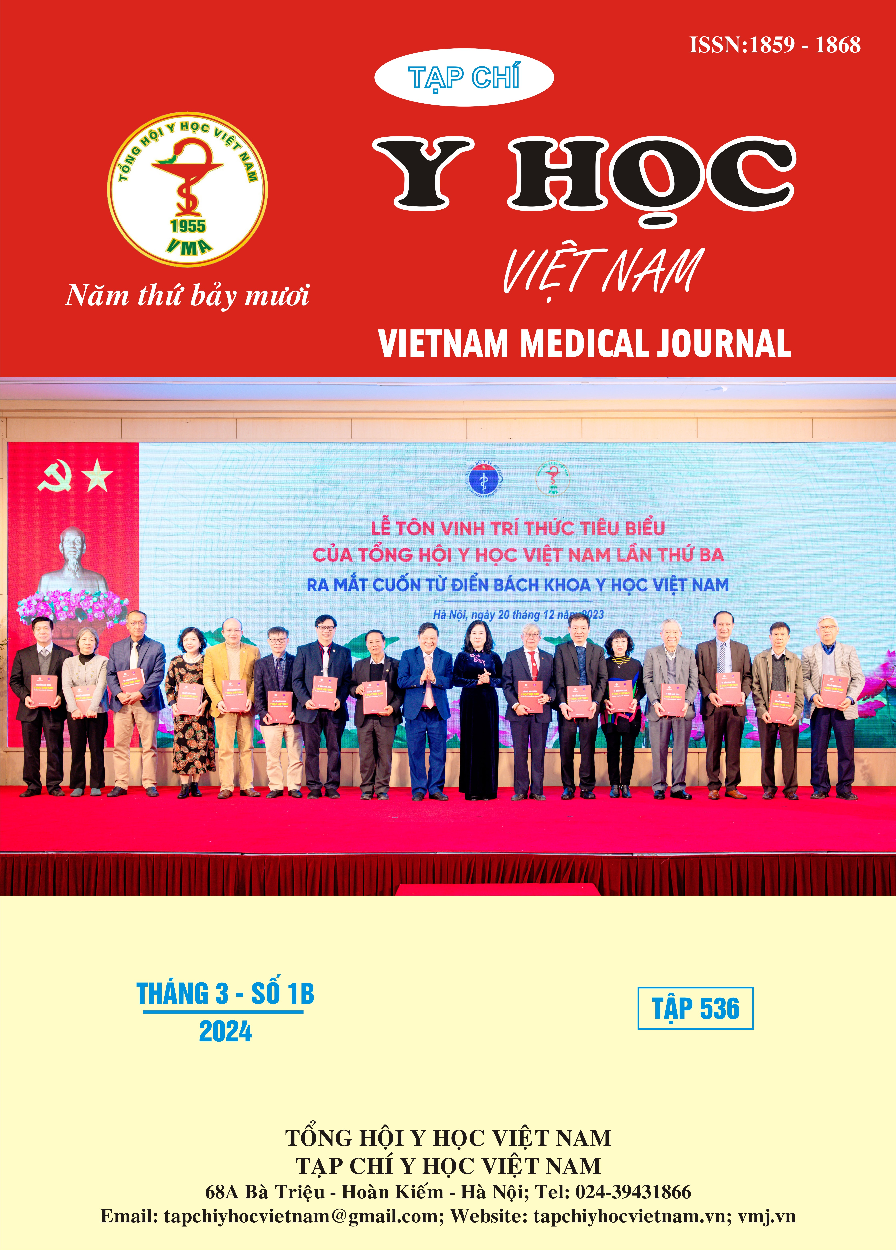CONSTRUCTING A REAL-TIME PCR PROCESS USING SYBR FLUORESCENT REPORTER TO DIAGNOSE THE SINGLE NUCLEOTIDE POLYMORPHISM VARIANT RS738409 IN THE PNPLA3 GENE
Main Article Content
Abstract
Introduction: The single nucleotide polymorphism (SNPs) rs738409 of the PNPLA3 gene affects the production and breakdown of fat in liver cells. The real-time PCR technique analyzing rs738409 polymorphism has been developed to determine SNPs using basic equipment, budget chemicals, and provides reliable diagnostic results. Determining information about rs738409 at minimal cost is a premise for research on the impact of rs738409 on the NAFLD pathogenic conditions and contributes positively to personalized medical development. Objective: Establishing a molecular procedure to identify the variant rs738409 on the PNPLA3 gene using the real-time PCR technique with SYBR fluorescent reporter. Methods: Constructing a real-time PCR procedure to diagnose the rs738409 polymorphism on the PNPLA3 gene with self-designed primer pairs by using the primer-BLAST tool from NCBI (USA). Evaluating the specificity and optimizing the concentration of the designed primers. Generating DNA plasmid lines containing the C and G allele of rs738409 using the TA cloning method. Validating the ability to determine the genotype of the variant through real-time PCR reactions with a set of plasmid DNA controls using SensiMix™SYBR®Low-ROX Kit reagents (Bioline). Applying the procedure to 147 samples confirmed for genotype variants by Sanger sequencing to evaluate the sensitivity, specificity, and accuracy of the developed procedure. Results: Successfully constructed a technical procedure for real-time PCR SYBR to diagnose the rs738409 polymorphism on the PNPLA3 gene. The specific primer sequences achieve specificity when tested by capillary electrophoresis and melt curve analysis. The optimal primer concentration is 250 nM, with a CV% of Ct values between replicate reactions less than 11% and the average Ct value ranging from 25 to 30. The determined value of |ΔCt| is 3, which distinguishes the genotype variants (CV% less than 11%). The sensitivity, specificity, and accuracy of the technique are 98.6%, 100%, and 99.3%, respectively. Conclusion: A technical procedure for real-time PCR SYBR was successfully developed to determine the rs738409 variant on the PNPLA3 gene.
Article Details
References
2. European Association for the Study of the, L., D. European Association for the Study of, and O. European Association for the Study of, EASL-EASD-EASO Clinical Practice Guidelines for the management of non-alcoholic fatty liver disease. J Hepatol, 2016.64(6): p.1388-402.
3. Eslam, M. and J. George, Genetic and epigenetic mechanisms of NASH. Hepatol Int, 2016. 10(3): p. 394-406.
4. Salari, N., et al., Association between PNPLA3 rs738409 polymorphism and nonalcoholic fatty liver disease: a systematic review and meta-analysis. 2021. 21(1): p. 1-12..
5. Basu Ray, S., PNPLA3-I148M: a problem of plenty in non-alcoholic fatty liver disease. Adipocyte, 2019. 8(1): p. 201-208.
6. Thermofisher Scientific. Precision in qPCR. 2021. Access date: 12/09/2023. https://www.thermofisher.com/vn/en/home/life-science/pcr/real-time-pcr/real-time-pcr-learning-center/gene-expression-analysis-real-time-pcr-information/precision-qpcr.html
7. Grada A, Weinbrecht KJTJoid. Next-generation sequencing: methodology and application. 2013;133(8):e11.


